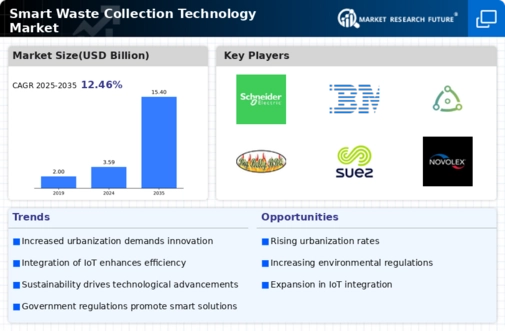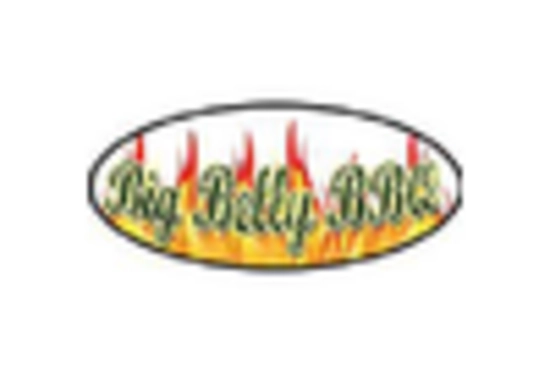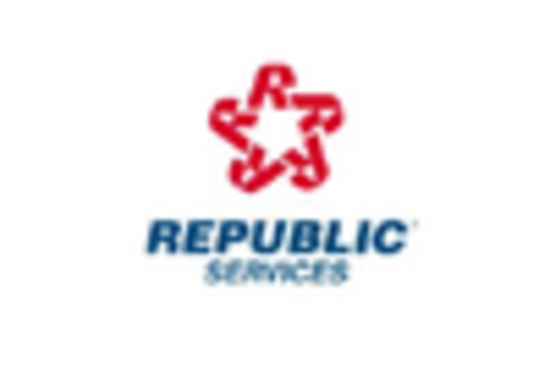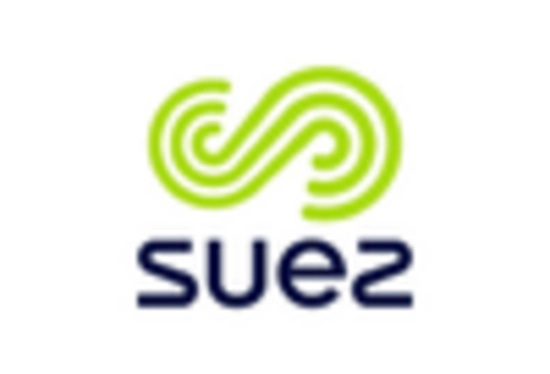The Smart Waste Collection Technology Market is currently characterized by a dynamic competitive landscape, driven by increasing urbanization, environmental regulations, and the growing demand for efficient waste management solutions. Major players such as Veolia (FR), Waste Management (US), and Bigbelly (US) are strategically positioning themselves through innovation and partnerships. Veolia (FR) focuses on integrating advanced technologies into its operations, enhancing its service offerings, while Waste Management (US) emphasizes sustainability and operational efficiency. Bigbelly (US) leverages its smart waste and recycling systems to optimize collection routes, thereby reducing operational costs and environmental impact. Collectively, these strategies contribute to a competitive environment that prioritizes technological advancement and sustainability.
In terms of business tactics, companies are increasingly localizing manufacturing and optimizing supply chains to enhance responsiveness to market demands. The Smart Waste Collection Technology Market appears moderately fragmented, with a mix of established players and emerging startups. This fragmentation allows for diverse approaches to waste management, with key players influencing market trends through their innovative solutions and strategic collaborations.
In August 2025, Veolia (FR) announced a partnership with a leading technology firm to develop AI-driven waste sorting systems. This strategic move is expected to enhance the efficiency of waste processing and recycling, aligning with global sustainability goals. By integrating AI into its operations, Veolia (FR) aims to improve the accuracy of waste sorting, thereby increasing the volume of materials that can be recycled and reducing landfill dependency.
In September 2025, Waste Management (US) launched a new initiative focused on expanding its smart waste collection services in urban areas. This initiative includes the deployment of IoT-enabled bins that provide real-time data on waste levels. The strategic importance of this move lies in its potential to optimize collection routes and schedules, ultimately leading to cost savings and improved service delivery. By enhancing its smart waste solutions, Waste Management (US) positions itself as a leader in the evolving waste management landscape.
In July 2025, Bigbelly (US) secured a significant contract with a major metropolitan city to install its smart waste and recycling stations throughout the urban area. This contract not only expands Bigbelly's market presence but also underscores the growing recognition of smart waste solutions in urban planning. The strategic importance of this contract lies in its potential to enhance the city's waste management efficiency and sustainability efforts, further solidifying Bigbelly's position in the market.
As of October 2025, current competitive trends in the Smart Waste Collection Technology Market are heavily influenced by digitalization, sustainability, and the integration of AI technologies. Strategic alliances among key players are shaping the landscape, fostering innovation and enhancing service offerings. Looking ahead, competitive differentiation is likely to evolve from traditional price-based competition to a focus on technological innovation, reliability in supply chains, and sustainable practices. This shift indicates a growing recognition of the importance of advanced solutions in addressing the complexities of modern waste management.

















Leave a Comment